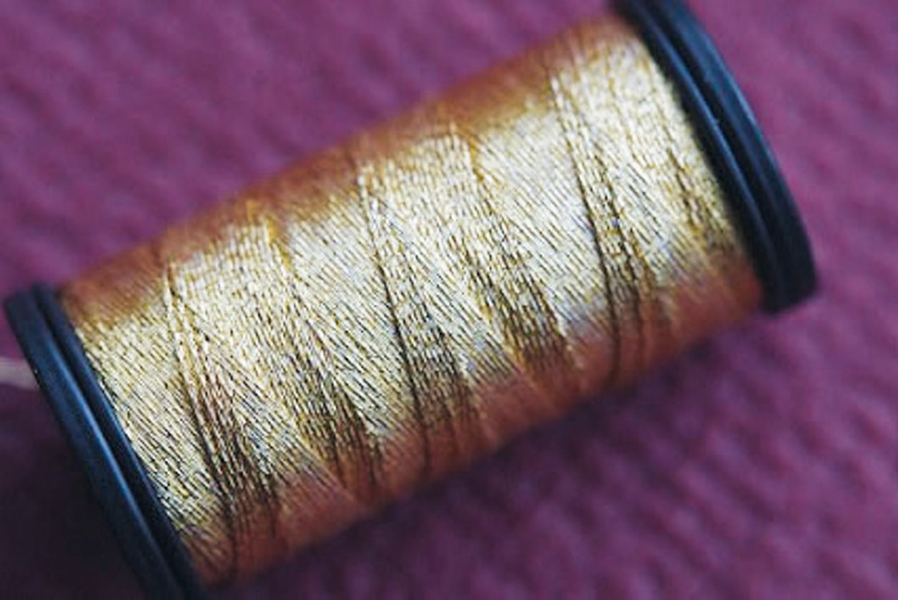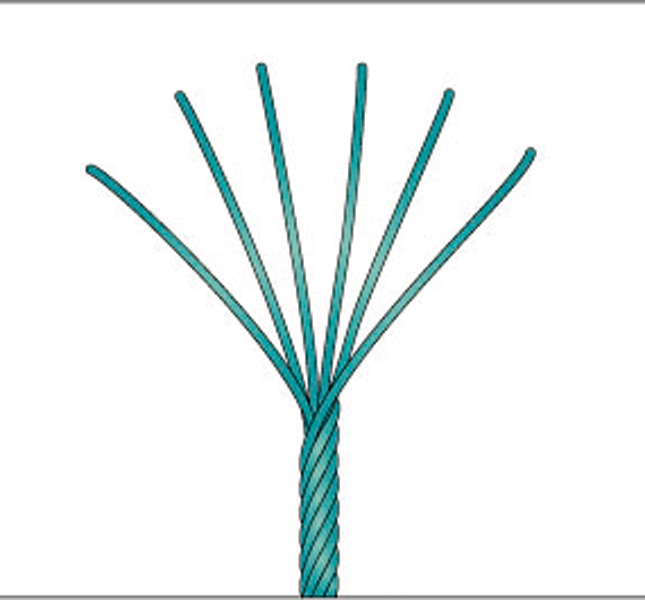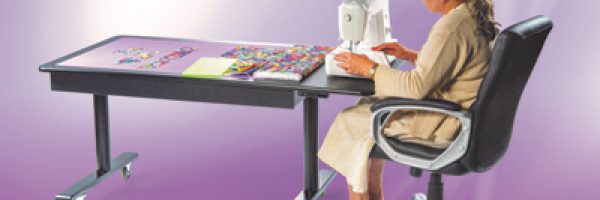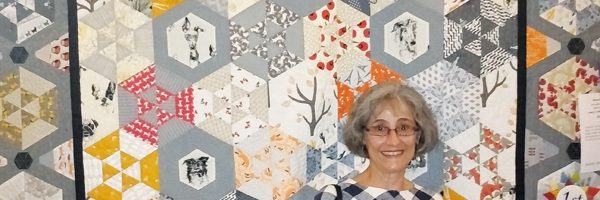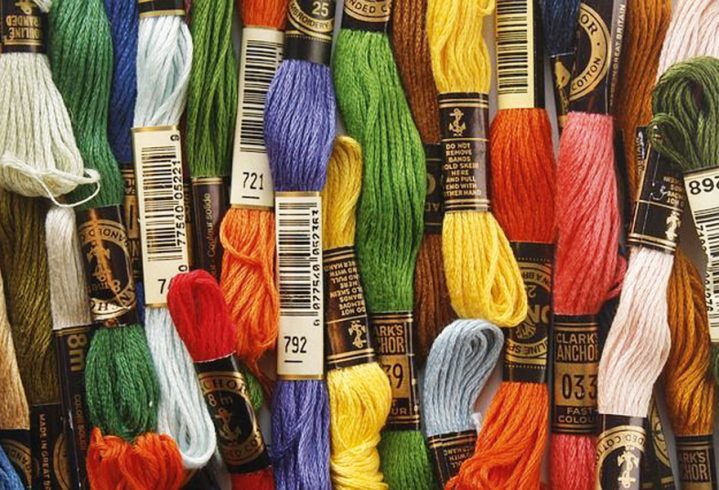
Hand Embroidery Workshop
Embroidery uses a needle and thread to make stitches to create a design. You need to learn a number of stitches, which you can find on the Homespun website: www.homespun.net.au/stitch-guide. There are more than 70 stitches in the online stitch guide. The basic stitches most commonly used are backstitch, blanket stitch, satin stitch, French knot, lazy daisy, fly stitch and stem stitch.
Embroidery thread
Stranded Embroidery Floss
Stranded thread is the thread most often used for doing embroidery work. It is widely referred to as embroidery floss – ‘floss’ is simply thread that is divisible. Embroidery floss has six strands of thread. The number of threads you need is dependent on what type of work you are doing. For example, when outlining you would use one thread, for cross stitch it is common to use two, and needlepoint can use six. Embroidery floss is available in cotton, rayon and silk.
The best-known cotton threads are arguably DMC, due to their high standard and longevity. More recently, smaller companies have introduced bespoke solid and variegated colours onto the Australian market. Cottage Garden Threads are created by mother and daughter duo, Pam and Katie, in Victoria and their Signature Range offers 222 variegated colours in six-stranded cotton, perle 8 and perle 12 weights.
Rayon floss provides bright colours with a silk-like sheen. It is the shiniest embroidery floss but it can be a difficult to work with as it knots and tangles easily. Working with shorter lengths can lessen the problems.
Silk threads are available in brilliant shades and are mostly used in fine embroidery. However, silk threads can fade very easily and they may bleed. After you have done the silk thread embroidery, lightly press the back of the work using slight steam on the iron – this will give the silk thread a beautiful sheen. Silk thread can also be used to couch thicker threads, such as perle or metallic threads or cords, onto fabric.
Perle/Pearl Cotton
Perle thread is a single strand that is made of two fibres twisted together – do not try to separate them. The perle/pearl cotton thread is available in various weights; the greater the number, the finer the thread. The texture of this thread makes it good to use in hardanger embroidery, cross stitch and redwork, as well as for textured hand quilting.
Metallic thread
Metallic thread is usually used to give highlights to other embroidery techniques. It tarnishes easily, tangles, snags and frays, but its beauty and brilliance is something else. It may be difficult to wash a fabric embroidered with some metallic thread so it can be limiting, although metallic thread does not tarnish.
Crewel yarn
This is a fine, wool or acrylic two-ply strand that can be used for wool embroidery, needlepoint, cross stitch or tapestry work. One strand of this yarn is as thick as two strands of embroidery floss thread.
Embroidery needles
There are basically four needles that you will use to make embroidery stitches: embroidery/crewel, chenille, tapestry and milliner/straw.
Embroidery needles are the finer of the three, with a sharp tip and a medium-long eye slightly larger than the shaft of the needle that can accommodate multiple strands of thread. It’s the basic one used for hand-embroidery as it easily moves through the types of fabric most common in embroidery projects, such as cotton, linen or Osnaburg.
Chenille needles also have sharp points, but they have a larger eye and thicker shaft than embroidery needles. They work well on the same fabrics as embroidery needles do, however the larger eye and stronger shaft make them more suitable to heavier threads such as perle and metallic threads.
Tapestry needles have a shorter shaft than a crewel needle, but a longer eye and a blunt tip. They are commonly used in counted cross stitch and needlepoint because the blunt tip does not pierce the ground fabric, which is generally an open weave such as canvas, Aida or open-weave linen.
Milliner, or straw, needles have a shorter, almost-round eye with a long shaft and sharp tip. The eye and the shaft are the same size, making it perfect for working any wrapped stitches such as bullion knots, French knots or cast-on stitches.
Separating stranded floss
No matter how many you are using, the strands must first be separated from the skein, one at a time. By pulling them out and laying them back down beside each other before using them to stitch, you will stop them from twisting around each other, which improves the finished look as the threads will be smoother and show more sheen.
Floss is a skein of six stranded threads
- To start, find the end of the thread on your skein of floss. Gently pull on the tail of the thread to get a length of thread of about 35cm (14in); that’s generally a good length of thread to work with. Working with threads longer than this can put too much stress on the thread as it is repeatedly pulled through the fabric, which in turn will make it fray and weaken. Put the skein aside.
- Tap your fingertip on the end of the thread length you just cut and watch it pull slightly apart.
- To separate the floss into individual strands, pull one strand up and out slowly while holding the skein gently. Pull it straight up and out of the skein.
- Continue to pull out the number of strands that are required for the project you have chosen.
- Re-join the threads by holding them together at one end and gently stroking the length to smooth and recombine them.
Katie’s tool advice
Katie, one half of the mother and daughter duo behind Cottage Garden Threads, shares three embroidery tools she can’t stitch without.
- I can’t stitch without a sturdy, splinter-less timber hoop and it must have a screwdriver fastening for when I need to achieve a drum tight tension. I use both round and oval hoops depending on what I’m working on, but tend to go between an 8.5cm, 10.5cm and 12.5cm round hoop or a 16cm x 10cm oval.
- I hate unpicking! I’m yet to find a soul who likes unpicking. Even if you put a bow on it and call it ‘reverse stitching’, it still ain’t fun! To reduce the need for unpicking, I have a scribble cloth which is a fat quarter of plain homespun, backed with a woven stabiliser that I take from project to project. I use the scribble cloth to practise stitches I haven’t done in a while or rehearse a certain stitch for the task at hand. When it doesn’t quite work out on the scribble cloth, you just cut your losses and move on — you don’t even have to knot the thread off on the back! It’s great to take to workshops and retreats so you can practise what you learn while it’s fresh in your mind. You can also scribble notes on the cloth with a permanent pen to help you remember tips from tutors and fellow stitchers.
- While stitching, your work is folded and scrunched to within an inch of its life, and only when you’ve stitched your last stitch can you reveal its full glory by giving it a darn good pressing! But alas, not any press will do. After all the hours of work and holding your tongue just right to get that tricky stitch to behave itself, the last thing you want to do is treat your embroidery like an over-starched work shirt that will squash your stitches and never quite press the background fabric nice and close to the stitches. Enter the pressing cloth – a traditional embroiderer’s tool for pressing your embroidery to perfection. By laying the embroidery face-side down on a pressing cloth, it allows the stitches to sink gently into the pressing cloth while pressing the background fabric perfectly flat.
You can visit www.cottagegardenthreads.com.au to find more of Katie’s sage advice, as well as purchase the tools she mentions above – and many other embroidery items, including Cottage Garden Threads.



